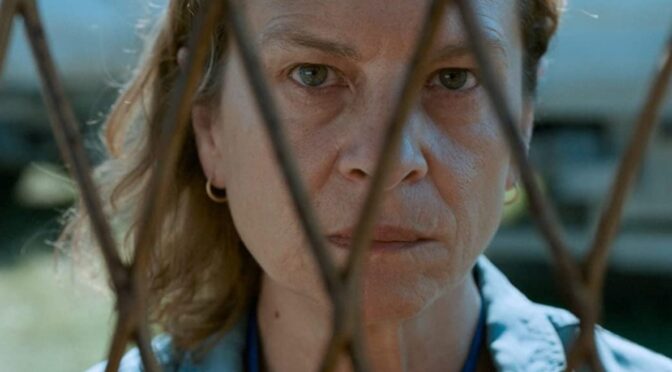After watching Jasmila Zbanic’s breathtakingly emotive feature, I was keen to find a translation for “Quo Vadis.” I thought that perhaps it was something simple, for the plot of the film. I pondered whether or not it was “What are they saying?” or “Can you translate?” I discovered a religious element that had come from Latin. In a biblical context – a verse which surrounds the idea of Jesus’s execution – it reads as “Whither goest thou?” I was confused by the religious context of a film so full of historic horror and senseless evil. I wondered, what is the religious message in a film reflecting on the darkest corners of humanity? I realised that perhaps it means nothing and everything all at once, that no one’s beliefs, politics, or philosophies can escape the cultural fates in which many can become caught up. When life remains undetermined, our art must follow in its ambiguous footsteps.
Zbanic’s QUO VADIS, AIDA? recalls the tragedy of the Srebrenica Massacre of 1995, from the perspective of a UN translator, and former teacher, as she tries to keep her family safe – in a UN camp set up as a safe place by the local military base – from the civil war.
Throughout Zbanic’s feature, there is an overwhelming feeling of dread at every turn. It seems to have a similar pace to Agnieszka Holland’s IN DARKNESS, where it is difficult to follow the undercurrents and collisions of the tone and atmosphere, cycling in turbulent waves of optimism and despondency. And much like IN DARKNESS, the claustrophobia builds silently, dropping the spectator into an emotional simulation of dread and anticipation.
It is difficult to find the balance through the microcosm and macrocosm of genocide on film. When a film strives to reflect a historical event, it must transcend the fictional protagonists’ experiences to reach the realities of the pandemonium that informed the screenplay. The way Zbanic processes this is through the side stories that exist in the background of Aida’s journey, lending itself to the exploratory canvas of a prismatic structure that allows for the supporting cast to embody the series of afflictions experienced by Aida and her family. We see Aida struggling to keep her sons and husband safe, alongside other people within the base using disguises to keep their sons with them, or women wrestling with Serbian soldiers to stop them leading their partners to separate transport services. There is a subtle universalism that Zbanic manages to imbue into the rhythm and pace of her feature, making the simulation for the spectator all the more captivating and tortuous in the same breath.
Jasna Djuricic’s performance is the engine behind the Zbanic’s vehicle of writing and direction. She manages to incorporate a great sense of naturalism to very unnatural circumstances and stories. It is difficult to retain complete focus on the protagonists of films retelling the horrors of historical genocide, and whether it is the frenetic storytelling necessary to emphasise chaos, the hyperbolic antagonists that dominate the lens, or our need to distance ourselves from the screen, we are never told what we truly want to know. But Djuricic does not let us seek comfort in our innate desire for escapism; she leads us to the obstacles many of us could barely imagine and presents the mortal panic of those dragged into the depths of depraved war crimes.
Jasmila Zbanic’s heart-wrenching feature swirls through moments of reflective anguish and ruminating cynicism, with the perfect formula to remember, condemn and question the forces that lead to the infamous events of the Bosnian genocide. More importantly, it crystalises the pain of being stuck in time – how can the victims of such an immense rupture of moral code and familial loss move forward with the people that remain on the sidelines, or beyond borders, who have never been caught in the cross-fire? Zbanic’s balance of microcosmic torment and macrocosmic divide makes QUO VADIS, AIDA? a multi-dimensional reflection of the devastation of genocide. The film is one that is hard but necessary to swallow.

